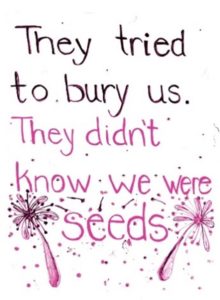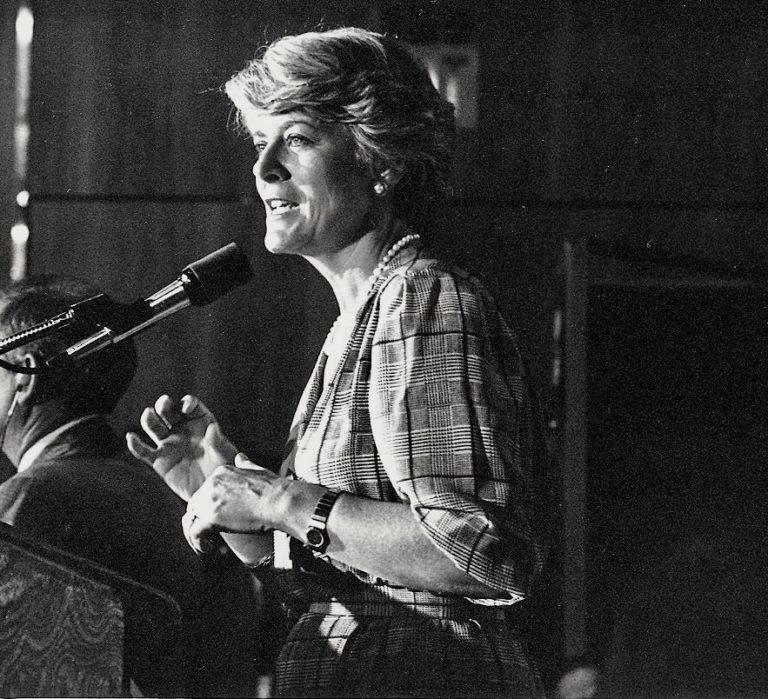As we wrap up Black History Month and enter Women’s History Month, Gender on…
Sarah Bloom Raskin, a role model for every woman who aspires to lead and write HERstory

Earlier this year, Sarah Bloom Raskin’s withdrawal of her nomination to the Federal Reserve board of directors reminded me that the ground isn’t level for women seeking public leadership, nor are the steps up the leadership ladder easily traversed. No matter how qualified you are. No matter, as this case makes clear, when a presidential nominee is of the same political party as the Senate majority. So, as we are well into the 2022 campaign season−perhaps you’re even traversing your own path to public leadership−I’m sharing the conclusion I draw from Raskin’s experience.
To put my thoughts in context, I draw from my book, Make Herstory Your Story: Your Guided Journal to Justice Every Day for Every Woman. It is a workbook for planning your path to public and political leadership, whether to elected or appointed office, or to organizational leadership, or to feminist advocacy. Throughout, the workbook makes plain two important truths:
- You may not win every battle, but that’s no reason to give up.
- Standing up for your principals is what matters most.
Consider the ostensible reason for Raskin’s rejection by various Senators. In Raskin’s words, opposition to her nomination was due to reluctance to acknowledge, “the economic complications of climate change and the toll it has placed, and will continue to place, on Americans.” As to not giving up, Raskin expressed regret that the US Senate failed to fully consider her qualifications: that was it.
There has been bipartisan rejection of two of President Biden’s women nominees requiring Senate confirmation. This first happened in the case of Neera Tanden’s nomination to Director of the Office of Management and Budget. Democratic U.S. Senator Joe Manchin declined to support Tanden, just as he declined to support Raskin. Longer ago, in the mid-1990s, Harriet Miers’s nomination to the Supreme Court by President George W. Bush was rejected by a bipartisan set of Senators for her perceived lack of qualifications and lack of honesty.
Importantly, it has been less than a century since any woman was nominated to any post requiring Senate confirmation. This first occurred in 1933 when Nellie Tayloe Ross was nominated by President Franklin D. Roosevelt and confirmed as Director of the U.S. Mint. It looks likely that Judge Ketanji Brown Jackson will be confirmed to the Supreme Court—the first Black woman to do so. There is progress amidst setbacks.
“Unfair,” “unjust,” “sexist,” were the words I said to myself when I read that Raskin had withdrawn her nomination. Then, I got even angrier as I remembered that she had previously been twice confirmed by the Senate. But, on reflection, I realized my choices in considering this news were to despair, or to persevere.
I chose persevere. I recommend you do, too:
- Follow the guidance in Make Herstory Your Story: be persistent in the face of challenge or loss, no matter how invidious the experience.
- Recall why we marched in 2017, last year, and for decades. Because we were determined to do everything we could to advance women’s opportunity, no matter what rocks were strewn in our path.
On page 1 of Make Herstory Your Story, you’ll see this image from Women’s March posters:

This is our mantra: We will not be buried, for we have far too much to do and we need all the determination to do it. As a reminder of this truth, here is another image from the Women’s March and Make Herstory Your Story:

We face some of the greatest challenges to American women’s rights we’ve seen in the last fifty years. The lesson to draw from the profiles in women’s courage that surround us is to renew our mutual and common commitment to find ways to make herstory that improves women’s and girls’ lives. Onward!






